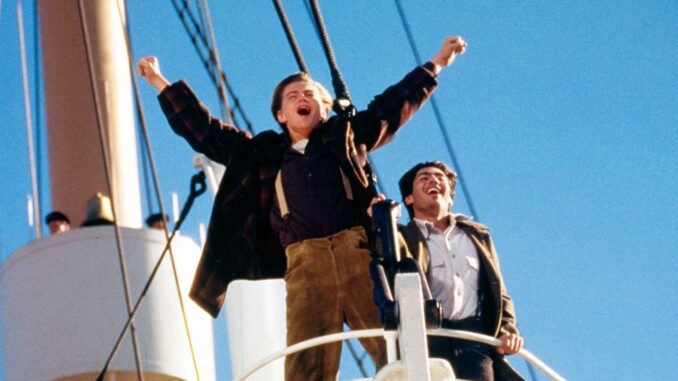
Understanding Titanic Through the Lens of Filmmaking
The RMS Titanic, a name synonymous with ambition, luxury, and catastrophic failure, continues to hold an unparalleled grip on the collective imagination. More than a century after its fateful maiden voyage, the story of the "unsinkable" ship that plunged into the icy Atlantic remains a potent narrative. While historical accounts, survivor testimonies, and countless books have meticulously documented the event, it is through the unique, interpretive lens of filmmaking that we truly begin to understand the Titanic, not merely as a historical footnote, but as a living, breathing saga of human endeavor, hubris, and heart-wrenching loss. Filmmaking transforms cold facts into visceral experiences, allowing us to step aboard, feel the chill, hear the cries, and confront the profound themes embedded within its tragic narrative.
One of the primary ways filmmaking illuminates our understanding of the Titanic is by offering a tangible, visual reconstruction of the disaster. Prior to the advent of sophisticated visual effects, films like Roy Ward Baker’s 1958 masterpiece, A Night to Remember, meticulously recreated the ship’s final hours with an almost documentary-like precision. Based on Walter Lord’s exhaustive research, this film eschewed dramatic embellishment for a stark, procedural recounting of events. Through the lens of this black-and-white portrayal, audiences understood the timeline of the sinking, the heroic efforts of the crew, the chaotic launch of lifeboats, and the stoic resignation of many passengers. The film, using detailed models and careful staging, allowed viewers to grasp the sheer physical reality of the catastrophe – the agonizing tilt, the desperate search for help, the final, terrifying plunge. It wasn't just a story being told; it was an unfolding disaster being witnessed, providing an understanding of the mechanical failures and human responses that defined that night.
However, to truly comprehend the Titanic's enduring emotional resonance, filmmaking needed to delve beyond procedural accuracy into the heart of human experience. This is where James Cameron's 1997 epic, Titanic, revolutionized our understanding. Cameron recognized that the disaster was not just about steel and ice, but about the 2,200 souls aboard. By crafting the fictional romance between the aristocratic Rose DeWitt Bukater and the working-class artist Jack Dawson, Cameron provided an intimate, relatable entry point into the grand tragedy. Through their eyes, audiences experienced the dazzling opulence of the first-class salons, the vibrant camaraderie of steerage, and the rigid class distinctions that dictated who lived and who perished. The film made the statistics personal; each wrenching moment of separation, each selfless act of sacrifice, each desperate gasp for air in the freezing water was magnified through the prism of their love story and the myriad of secondary characters. This emotional investment, skillfully orchestrated through soaring music, breathtaking visuals, and powerhouse performances, allowed an entire generation to feel the Titanic, to grieve for its passengers, and to understand the profound human cost of the disaster in a way no historical text alone could convey.
Beyond reconstruction and emotional immersion, filmmaking also serves as a crucial lens for interpreting the broader thematic implications of the Titanic. Films exploring the subject invariably grapple with themes of human hubris, the stark realities of social class, and the fragility of even the most magnificent human creations when faced with nature's indifference. Cameron’s Titanic, for instance, heavily critiques the class structure of the Edwardian era, explicitly illustrating how wealth and social standing dictated one’s chances of survival. The locked gates to steerage, the disproportionate number of third-class casualties, and the differing reactions of passengers to their impending doom all become powerful cinematic statements that foster a deeper understanding of the societal inequalities inherent in the disaster. Similarly, the recurring motif of the "unsinkable" ship itself, often presented with grand, sweeping shots of its majestic scale, serves as a poignant cinematic metaphor for human arrogance, shattered by the simplest, most fundamental force of nature: an iceberg. This visual storytelling transforms a historical event into a timeless parable about humility and the limits of technological prowess.
Finally, the sheer spectacle that filmmaking can achieve is vital in conveying the immense scale of the Titanic and the unimaginable terror of its sinking. From the initial awe-inspiring reveal of the grand liner steaming across the ocean to the terrifying sequence of its final breakup and descent, films utilize every tool in their arsenal – CGI, sound design, meticulous set pieces – to transport the audience directly into the heart of the catastrophe. The creaking of stressed metal, the rush of water, the screams echoing across the dark, frigid sea – these are sensations that words can only approximate. Filmmaking conjures these sensory details, creating an overwhelming, almost suffocating sense of reality that helps us grasp the sheer magnitude of the event. It’s through this cinematic grandeur, both beautiful and terrifying, that we truly understand not just that the Titanic sank, but how it sank, and the sheer, overwhelming powerlessness of those aboard.
In conclusion, understanding the Titanic is an ongoing process, continually informed by new discoveries and fresh perspectives. Yet, it is through the multifaceted lens of filmmaking that this understanding is most vividly brought to life. From the meticulous historical reconstruction of A Night to Remember to the emotionally resonant epic of James Cameron’s Titanic, films have allowed us to witness, to feel, to interpret, and to ultimately comprehend the layers of human drama, technological ambition, and societal fault lines that converged on that fateful night. They transform a distant historical event into a living narrative, ensuring that the lessons and the human stories of the RMS Titanic continue to resonate, reminding us of both the pinnacles and the perilous limitations of human endeavor.
